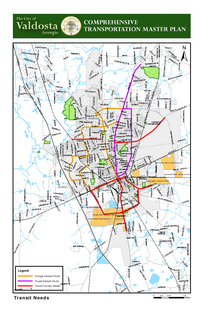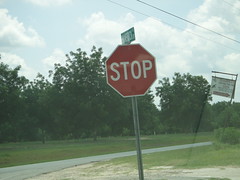That’s 5PM, before the usual 5:30 PM Lowndes County Commission regular session time, at 327 North Ashley Street.
The county
has published a public notice about this second hearing.
It’s not clear they did that for the first budget hearing, which was last week.
And the budget doesn’t include the T-SPLOST boondoggles Lowndes County is requesting.
VDT opined 23 June 2011,
What We Think: Surviving, not thriving:
 Lowndes County Commissioners held a budget hearing Tuesday to
discuss the 2011-2012 fiscal year with citizens, only to have no citizens
appear. The budget will be finalized at a public hearing Tuesday, June
28, prior to the regular commission meeting.
Lowndes County Commissioners held a budget hearing Tuesday to
discuss the 2011-2012 fiscal year with citizens, only to have no citizens
appear. The budget will be finalized at a public hearing Tuesday, June
28, prior to the regular commission meeting.
With all of the attention paid lately to officials and their expenses,
you would think that the opportunity to learn how the county spends
citizens’ tax dollars would have been an opportunity not to be
missed. But missed it was.
After giving people in Valdosta a hard time for
not showing up at their city’s budget hearing,
I have to say: mea culpa. I wasn’t there.
However, I would ask: how were we supposed to know about it?
 Someone from LAKE has been at every regularly-scheduled Lowndes County Commission
meeting in the recent past, videoing the whole meetings,
and I must have missed the announcement
of this recent budget hearing, which is also not on the county’s website calendar.
Someone from LAKE has been at every regularly-scheduled Lowndes County Commission
meeting in the recent past, videoing the whole meetings,
and I must have missed the announcement
of this recent budget hearing, which is also not on the county’s website calendar.
The VDT continues:
Maybe it’s because there’s nothing new about the county’s
budget. It’s the same as it has been for several years — flat.
No increases in revenue are projected. No new positions, merit raises,
cost of living increases, or significant purchases, again. Caps on
assessments, the continuing lull in construction, and slow sales mean no
new revenue is coming in. What is projected is enough to make ends meet,
but there are no frills, no luxury items, not this year.
Oh, there are luxury items, they’re just not in the budget,
because the county is asking we the taxpayers to pay through
the proposed new T-SPLOST tax for
That’s $24 million in new taxes they’re requesting for unnecessary road projects
that will promote sprawl into far north Lowndes County and into Lanier County.
Sprawl that will end up costing Lowndes County more than it can bring in in taxes from the sprawling developments.
And Lowndes County has tacked onto the end a request for
$7.5 million for a bus system.
Which would you rather have?
A bus system that would promote the entire county’s economy,
or five lanes on New Bethel to add to Lanier County sprawl?
Fortunately, T-SPLOST does publicize its hearings,
the next of which will be
6 July 2011 in Nashville, Georgia.
The VDT concludes;
But for Lowndes to thrive, to make such a possibility come alive, it needs
citizens willing to participate in the process. We need creative thinking
and we need leaders willing to listen to the possibilities of new ideas.
Hear hear!
Stay tuned for what happens when a citizen tries to get involved in the
Lowndes County budget process.
-jsq
Traffic on Old Pine will be regulated by the amount of people who use the highway; traffic on Bemiss since you and I moved out there forty years ago.
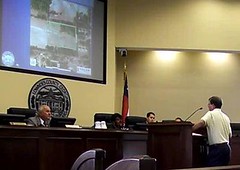





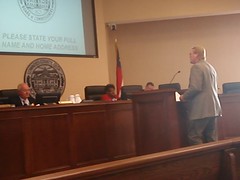
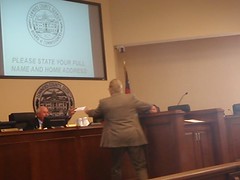



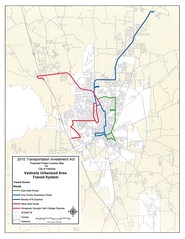 …including the creation and maintainance of a Public Transit System in the City
of Valdosta and Greater Valdosta-Lowndes County.
…including the creation and maintainance of a Public Transit System in the City
of Valdosta and Greater Valdosta-Lowndes County.
